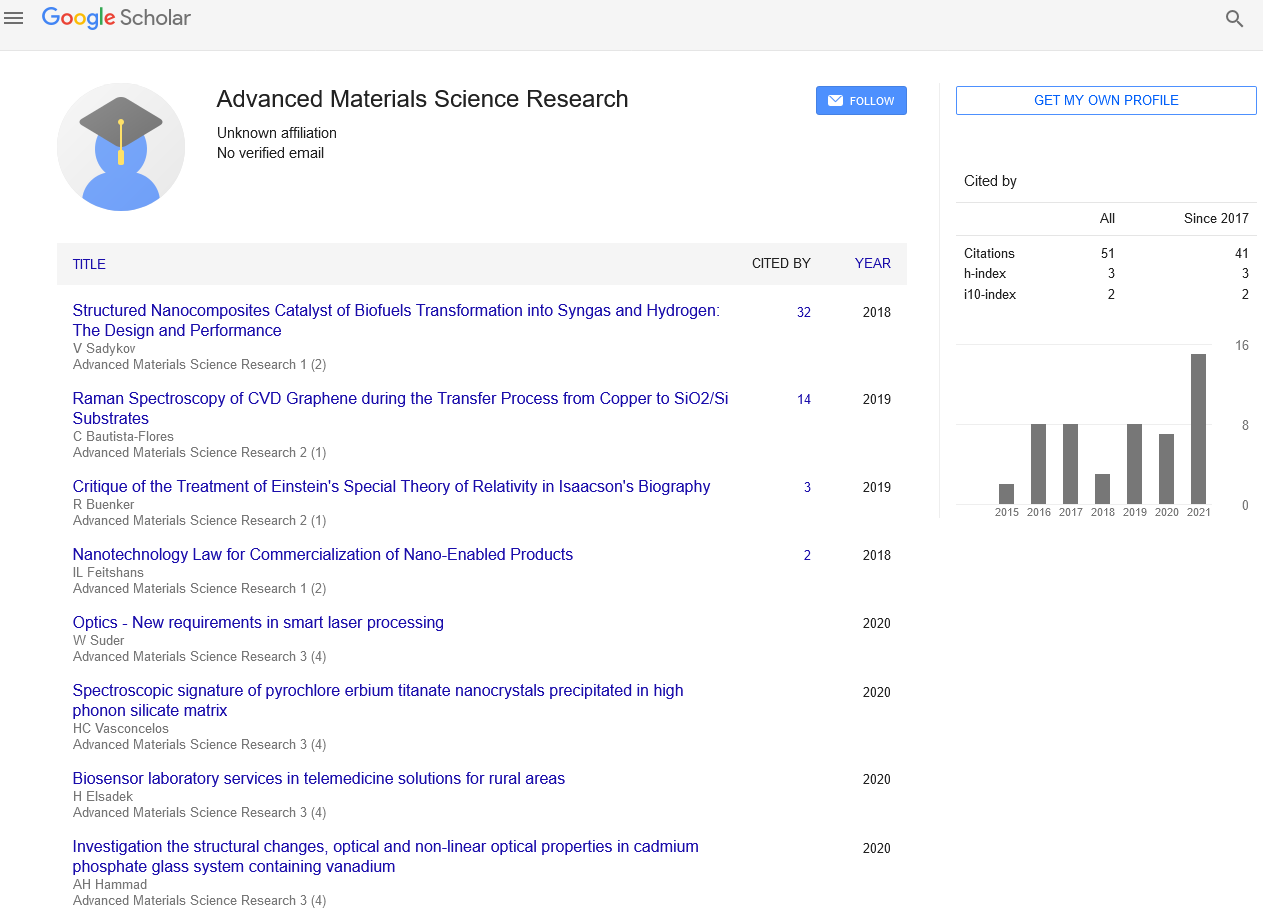Perspective - Advanced Materials Science Research (2024) Volume 7, Issue 4
Exploring the World of Porous Graphite: Properties, Applications, and Future Prospects
- Corresponding Author:
- Srinivasakannan
Department of Chemical Engineering,
Osmania University,
Hydarabad,
India
E-mail: kannanS@liyun.com
Received: 20-Jul-2024, Manuscript No. AAAMSR-24-141462; Editor assigned: 23-Jul-2024, PreQC No. AAAMSR-24-141462 (PQ); Reviewed: 06-Aug-2024, QC No. AAAMSR-24-141462; Revised: 17-Aug-2024, Manuscript No. AAAMSR-24-141462 (R); Published: 24-Aug-2024, DOI: 10.37532/ aaasmr.2024.7(4).193-194
Introduction
Graphite, renowned for its remarkable properties and diverse applications, continues to captivate scientists and engineers alike. Among its many forms, porous graphite stands out as a fascinating variant that combines the inherent qualities of graphite with enhanced porosity, opening up a myriad of new possibilities in various industries. This article delves into the intricacies of porous graphite, exploring its properties, applications and the promising future it holds.
Description
Understanding porous graphite
Graphite, a crystalline form of carbon, exhibits exceptional properties such as high thermal conductivity, lubricity, chemical inertness and electrical conductivity. These properties make it indispensable in applications ranging from industrial lubricants to electrodes in batteries. Porous graphite, as the name suggests, is graphite that contains interconnected voids or pores within its structure. These pores can vary significantly in size, influencing the material’s performance characteristics.
The porosity in graphite can be categorized into macro, meso and micropores based on their sizes. Macro and mesopores are typically larger, visible to the naked eye or under a microscope, whereas micropores are on a molecular scale, influencing adsorption and surface area properties.
Properties of porous graphite
Surface area and adsorption capacity: One of the most significant advantages of porous graphite lies in its increased surface area compared to non-porous graphite. This enhanced surface area allows for greater adsorption capacity, making it useful in applications such as water filtration, gas separation and adsorption of organic compounds.
Thermal and electrical conductivity: Despite its porosity, porous graphite retains excellent thermal and electrical conductivity, albeit slightly lower than non-porous graphite. This property is crucial in applications where heat dissipation or electrical conduction is required, such as in heat exchangers and electrodes.
Mechanical strength: The mechanical strength of porous graphite depends on its pore structure and the manufacturing process. While it may not match the strength of non-porous graphite, porous graphite can still exhibit good mechanical properties, making it suitable for structural components in certain applications.
Chemical inertness: Like non-porous graphite, porous graphite is chemically inert and resistant to many corrosive substances. This property makes it ideal for use in chemical processing, where resistance to acids, bases and solvents is necessary.
Manufacturability and customization: Porous graphite can be manufactured with tailored pore structures to meet specific application requirements. Techniques such as controlled pyrolysis of organic precursors or chemical vapour deposition can be employed to achieve desired pore sizes and distributions.
Applications of porous graphite
The unique combination of properties offered by porous graphite makes it suitable for a wide range of applications across various industries:
Water treatment and filtration: Porous graphite’s high surface area and adsorption capacity make it effective for water treatment applications. It can be used in filters to remove contaminants and impurities from water, improving its quality.
Gas separation and storage: In industries such as gas processing and storage, porous graphite can selectively adsorb gases based on their molecular size and affinity, facilitating gas separation and storage processes.
Electrochemical applications: Porous graphite is widely used in electrochemical applications such as electrodes for batteries, fuel cells and capacitors.
Catalysis: The large surface area and porosity of porous graphite make it an excellent support material for catalytic substances. It finds applications in catalytic converters, chemical synthesis and environmental remediation processes.
Thermal management: Due to its thermal conductivity and lightweight nature, porous graphite is used in heat exchangers, thermal insulators and cooling systems where efficient heat dissipation is crucial.
Medical and pharmaceutical: Porous graphite’s ability to adsorb molecules and its biocompatibility make it suitable for medical applications such as drug delivery systems and biosensors.
Industrial applications: From seals and gaskets to crucibles and moulds, porous graphite finds use in various industrial applications where its combination of properties provides significant advantages.
Future prospects and innovations
The field of porous graphite continues to evolve with on-going research and innovations aimed at enhancing its properties and exploring new applications.
Advanced manufacturing techniques: Researchers are exploring advanced manufacturing techniques such as additive manufacturing (3D printing) to create complex geometries and precisely control pore sizes in porous graphite structures.
Functionalization: Surface functionalization of porous graphite with nanoparticles or organic molecules can enhance its adsorption capacity, selectivity, and reactivity for specific applications.
Composite materials: By incorporating porous graphite into composite materials with polymers or other substances, researchers aim to develop materials with enhanced mechanical, thermal and electrical properties.
Environmental applications: With increasing focus on environmental sustainability, porous graphite holds promise in applications such as Carbon Capture and Storage (CCS) and environmental remediation of pollutants.
Energy storage: Continued research into porous graphite-based electrodes for batteries and capacitors aims to improve energy storage capacity, cycle life and overall performance of energy storage devices.
Conclusion
Porous graphite represents a fascinating intersection of traditional graphite properties with enhanced porosity-driven functionalities. Its unique combination of high surface area, conductivity and chemical inertness makes it indispensable in a wide range of applications from water filtration to energy storage. As research development in materials science progress, the future of porous graphite promising with potential breakthroughs in manufacturing techniques.

